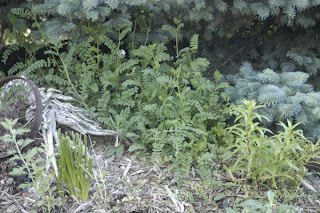In mid-May, for the first time since 2003, I went north again to a wonderful place near Sandusky, Ohio called Maggee Marsh, for some of the best birdwatching in North America. Right on Lake Erie, this area (and the surrounding Ottawa National Wildlife Refuge) is a bottleneck for warblers and other migrants heading to their breeding grounds in Canada. While some will stay and breed, many make a pit stop in the resource-lush wetland habitat to gorge on emerging caterpillars, spiders and other creepy-crawleys, before crossing the large body of water.
The weather the night before was ominous...lots of rain and strong winds (later we found out there had been tornado warnings)...and I wasn't sure setting the clock for 6:30 am was really a good idea. But watching out the back window of the camper van in the morning, the storm gradually settled down to a windy, overcast day, and off we went.
We could not have asked for a better day! The storm left the air clear, and the gusty winds kept the birds low in the trees, rather than up in the crown. We saw or heard a total of 66 species in over a day and a half. It was amazing!
The boardwalk makes birdwatching an easy hobby for bird enthusiasts, as well as photographers and those with disabilities. Capturing a warbler with a camera is no small feat...they move fast and often only stay within viewing a brief moment. We did our best...enjoy!
You can view the web album for our trip to Maggee Marsh at:













